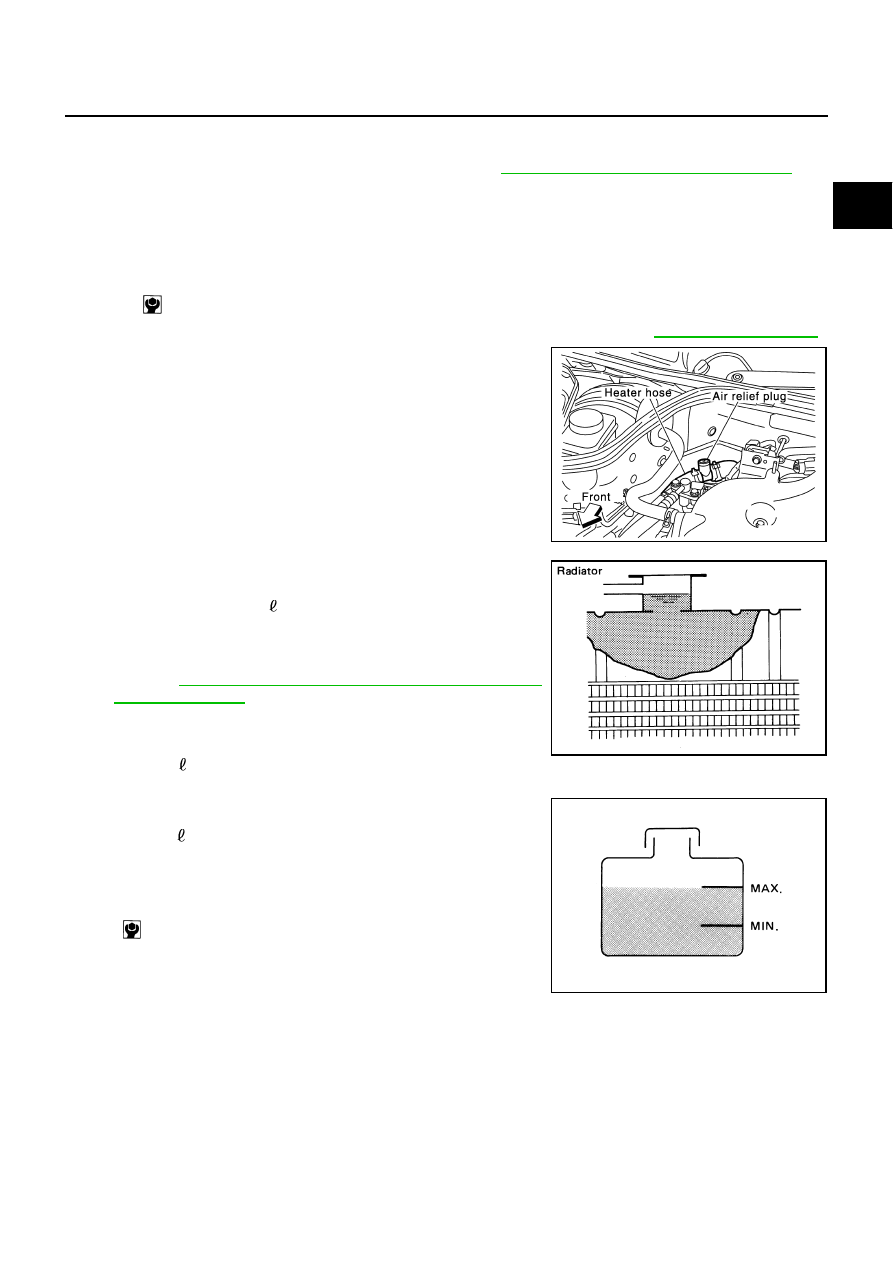Infiniti G35 (V35). Manual - part 258

ENGINE COOLANT
CO-11
C
D
E
F
G
H
I
J
K
L
M
A
CO
3.
Remove reservoir tank, drain engine coolant and clean tank before installing.
4.
Check drained engine coolant for contaminants such as rust, corrosion or discoloration.
If contaminated, flush the engine cooling system. Refer to
CO-12, "FLUSHING COOLING SYSTEM"
.
REFILLING ENGINE COOLANT
1.
Install reservoir tank if remove, and radiator drain plug.
CAUTION:
Be sure to clean drain plug and install with new O-ring.
If cylinder block drain plugs are removed, close and tighten them. Refer to
2.
Remove air relief plug on heater hose.
3.
Fill radiator and reservoir tank to specified level.
●
Pour engine coolant through engine coolant filler neck
slowly of less than 2 (2-1/8 US qt, 1-3/4 lmp qt) a minute
to allow air in system to escape.
●
Use Genuine NISSAN Long Life Antifreeze/Coolant or
equivalent mixed with water (distilled or demineralized).
Refer to
GI-46, "RECOMMENDED CHEMICAL PRODUCTS
●
When engine coolant overflows air relief hole on heater hose,
install air relief plug with new O-ring.
4.
Warm up engine to normal operating temperature with radiator cap installed.
5.
Run engine at 3,000 rpm for 10 seconds and return to idle speed.
●
Repeat two or three times.
CAUTION:
Watch water temperature gauge so as not to overheat engine.
6.
Stop engine and cool down to less than approximately 50
°
C (122
°
F).
●
Cool down using a fan to reduce the time.
●
If necessary, refill radiator up to filler neck with engine coolant.
Radiator drain plug:
: 1.2 N·m (0.12 kg-m, 11 in-lb)
PBIC0894E
Engine coolant capacity (Approximate)
(with reservoir tank at “MAX” level)
: 8.7 (9-1/4 US qt, 7-5/8 lmp qt)
SMA182B
Reservoir tank capacity (at “MAX” level)
: 0.8 (7/8 US qt, 3/4 lmp qt)
Air relief plug:
: 1.2 N·m (0.12 kg-m, 11 in-lb)
SMA412B